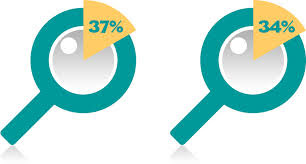Don't Fall Into These Social Security Traps - If you're looking forward to turning age 62 so you can begin collecting Social Security benefits and live on easy street, you might get caught off guard. Some of the Social Security rules can be frighteningly complex. Because it will likely represent a large portion of your retirement income, it's important to understand how the government program works.
For instance, there are limits on how much you can earn while collecting benefits, and if you exceed those limits, your Social Security benefits will get cut substantially. That's just one of the snares that could trip you up.
Make sure you plan appropriately to avoid these six Social Security traps.
Trap No. 1: Social Security may be taxable
If your earnings exceed a certain level, up to 85 percent of Social Security benefits may be taxable. Even income sources that are normally tax-exempt, such as income from municipal bonds, must be factored into the total income equation for the purpose of computing tax on Social Security benefits.
Eric Levenhagen, CPA and Certified Tax Coach with ProWise Tax & Accounting, says to find out whether any of your Social Security benefits are taxable, "Look at your total taxable income plus half of your Social Security benefit. Make sure you add back any tax-exempt interest income."
When your taxable income, tax-free income and half of your Social Security benefit exceed $25,000 ($32,000 for married couples filing jointly), that's when you're in the zone to pay taxes on Social Security income.
Another unexpected income source that could impact taxes on Social Security: proceeds from a Roth conversion.
If you're thinking about doing a Roth conversion, do so before receiving Social Security benefits, says Steve Weisman, an attorney and college professor at Bentley University. "A lot of people considering converting a traditional (individual retirement account) into a Roth IRA should be aware that if they do that, they will end up paying income tax on the conversion, which will also be included for determining whether Social Security benefits are taxable," he says.
Trap No. 2: Must take required minimum distributions
Required minimum distributions, or RMDs, must generally be made from tax-deferred retirement accounts, including traditional IRAs, after a person reaches age 70 ½. The distributions are treated as ordinary income and may push a taxpayer above the threshold where Social Security benefits become taxable.
"This is a double-edged sword," says Weisman. "If you are over 70 ½ , you are required to begin taking distributions from IRAs (except Roth IRAs) and other retirement accounts."
"Here again, you take half of the Social Security benefits plus all other income to determine whether Social Security benefits are taxable. RMDs will be included and drive that up," says Levenhagen.
You can't avoid required minimum distributions, but you can avoid being surprised at tax time.
Trap No. 3: Some workers don't get Social Security
Most people assume Social Security is available to seniors throughout the U.S., but not every type of work will count toward earning Social Security benefits. Many federal employees, certain railroad workers, and employees of some state and local governments are not covered by Social Security.
"Some of my clients have participated in retirement programs offered by employers that don't pay into Social Security," says Charles Millington, president at Millington Financial Advisors LLC in Naperville, Ill. "If your employer does not participate in Social Security, then you should be covered under the retirement program offered by your employer."
However, certain positions within a state government may be covered by Social Security.
Find out whether your employer participates in Social Security or not and if not, whether your position may be covered by Social Security. Make sure you understand where your retirement benefits will be coming from.
Trap No. 4: Early benefits could be a big mistake
If you opt to take Social Security as soon as you are eligible, you may be doing yourself an injustice.
"If you delay taking benefits until age 70, you will see as much as an 8 percent increase in benefits for each year you delay," says Steve Gaito, Certified Financial Planner professional and director of My Retirement Education Center. "In addition to receiving a higher benefit, the annual cost-of-living adjustment will be based on the higher number."
"It's hard to find that kind of rate of return on regular investments, so it's good to delay if you can," says Weisman.
Of course, life expectancy plays a part in the decision of when to begin drawing benefits. "You generally know how healthy you are and what your family medical history is," says Ryan Leib, vice president of Keystone Wealth Management. "We advise clients to determine whether they think they will live longer than age 77. If so, delaying until age 70 will net you more in benefits than opting to start collecting benefits early."
If you're able to live off other funds and delay taking Social Security, you should seriously consider doing so. "Delaying taking Social Security until age 70 could mean the difference between cat food and caviar in retirement," says Leib.
Trap No. 5: Windfall elimination provision
If you work for multiple employers in your career, including both employers that don't withhold Social Security taxes from your salary (for example, a government agency) and employers that do, the pension you receive based on the noncovered work may reduce your Social Security benefits.
"Many people are not aware that their actual Social Security benefit may be lower than the amount shown on their statements or online because the windfall elimination provision reduction does not occur until the person applies for their benefits and (the Social Security Administration) finds out they are entitled to a pension," says Charles Scott, president of Pelleton Capital Management in Scottsdale, Ariz.
Social Security applies a formula to determine the reduction. In 2012, the maximum WEP reduction was $383.50. There is a limit to the WEP reduction for people with very small pensions.
If you have worked for both noncovered and covered employers, don't let the windfall elimination provision catch you by surprise.
Trap No. 6: Limits on benefits while working
You are allowed to collect Social Security and earn wages from your employer. However, if your wages exceed $15,120 in 2013, your Social Security benefits will be reduced by $1 for every $2 you earn above that level, says Mark Spittell, senior director at Alvarez & Marsal Taxand.
During the year in which you reach full retirement age -- which ranges from age 65 to 67, depending on your birth year -- you can earn up to $40,080 before $1 of your Social Security benefits will be deducted for every $3 you earn above that threshold. However, the money isn't lost forever. You will be entitled to a credit, so your benefits will increase beginning the month you reach full retirement age.
At full retirement age, no income restrictions apply. "There is no penalty for additional income earned," says Gaito.
If you plan on working beyond age 62 and anticipate earning more than $15,120 per year, strongly consider putting off Social Security benefits. ( Bankrate.com )

















